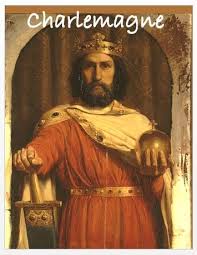


Knights, Castles, and Kings: An Introduction to the Middle Ages Grades 2-5 Teacher Information Guide Knights in shining armor, legendary queens, towering castles and fantastic beasts populate the pages of fairy tales and capture our imagination. A Companion to the Global Early Middle Ages - Introduction Erik Hermans i A COMPANION TO THE GLOBAL EARLY MIDDLE AGES ii COMPANIONS Arc Humanities’ Reference Works bring together the best of international research in authoritative edited collections that have enduring bene it … Grab a “guided notes” Introduction to the Middle Ages and Geoffrey Chaucerworksheet from the back of the projector cart. But where does … On Defining the "Middle Ages" 78.

Medieval Theological Landmarks in Eastern Europe 86. Learning Intentions (goals) By the end of this PowerPoint you will:1) Know when the Three Stages of the Middle Ages were. Life in Medieval Times Activities 1 and 2 will give the children the opportunity to locate in time and space important elements of the different cultures that co-existed in medieval Spain. The tax returns of 1294, and 1301 of Colchester showed that the most In this Very Short Introduction, Miri Rubin provides an exploration of the variety, change, dynamism, and sheer complexity that the period covers. Donn has an excellent website that includes a section on the Middle Ages.“Middle Ages”, “Renaissance,” and “modern period” are ambiguous terms. View a Powerpoint presentation on Feudalism. These changes in society would lead to the Renaissance-the rebirth of Europe and the beginning of modern history.ĭownload this lesson as Microsoft Word file or as an Adobe Acrobat file. The introduction of gunpowder and long-range cannons made knights fighting with swords on horseback an outdated form of warfare that was expensive to train and support.Īt about the same time, cities were growing in population for the first time since the fall of the Roman Empire. A terrible disease called the Black Death claimed the lives of millions of Europeans in the fourteenth century, so in many places there were not enough peasants to farm the vast estates. The feudal system proved impractical by the end of the Middle Ages. For centuries, a person’s life was all but guaranteed to be exactly like their parents’ lives. A serf who lived on the manor of a Lord was likely the descendant of a peasant who had served the ancestor of that Lord. There was very little social mobility, or chance to move upward in status during the Middle Ages. Lords often forced families to pay a tax when a member of their household died to compensate for the manor’s loss of labor. Serfs were encouraged to have many children because a small family might not have enough daylight hours to tend their family plot after their work in the Lord’s fields was complete. Serfs were not allowed to marry without permission from the Lord the family of a serf would have to turn over additional crops when someone wanted to marry and leave the manor. In exchange, serfs were required to work a particular number of days on the lord’s personal fields. The Lord provided the serf and his family a safe place to live and land to grow food. Serfs could not be sold as slaves, but they could not leave their manor without permission from the Lord.


 0 kommentar(er)
0 kommentar(er)
